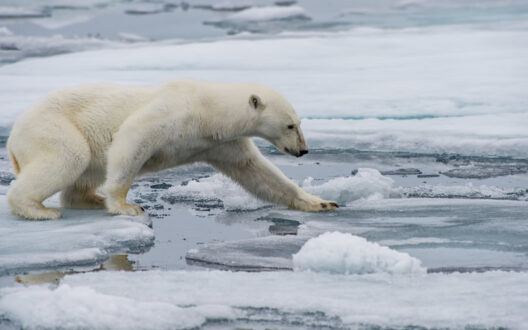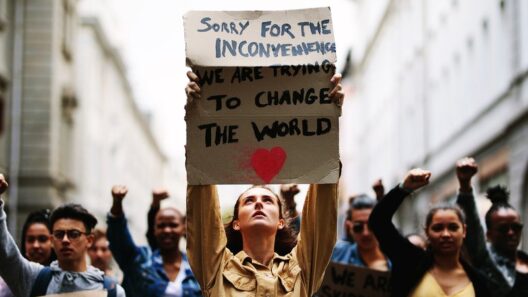In the grand tapestry of existence, the threads of climate and culture intertwine, weaving a narrative both profound and unsettling. The phenomenon of global warming emerges as a specter haunting the future of our planet. As the Earth’s temperature escalates, the question looms large: how long until global warming takes over? This inquiry is not mere speculation; it is a pressing concern that shapes policies, influences economies, and alters the natural world.
To grasp the urgency of this query, one must first comprehend the mechanics of climate change. Imagine the Earth as a delicate balance, a fragile ecosystem where the slightest perturbation can yield catastrophic upheaval. Carbon dioxide, a ubiquitous product of human activity, acts as a blanket wrapping the planet in warmth. While this greenhouse effect is essential for sustaining life, excessive emissions have caused it to become a recklessly thickened quilt, warping our climate beyond recognition.
Scientific consensus indicates that the Earth’s temperature has already risen by approximately 1.1 degrees Celsius since pre-industrial times. This seemingly minuscule increment bears significant consequences. Think of the planet’s climate as a finely tuned symphony. With each degree of warming, the musicians—glaciers, ecosystems, and weather patterns—struggle to maintain harmony. Disruption is evident: glaciers are retreating, sea levels are rising, and extreme weather events have become increasingly frequent and ferocious.
Consider the metaphor of a boiling frog. A frog placed in tepid water may not sense the gradual increase in temperature, ultimately leading to its demise. Similarly, humanity may be underestimating the immediacy of the threat posed by global warming. The slow creep of temperature rise disguises the urgency of the situation. Each year that passes without substantial action is akin to the frog remaining in its lethal pot, blissfully unaware until it is too late.
The effects of global warming manifest in various forms, from the scorching heat waves that batter the plains to the torrential downpours that extinguish the very soil we cultivate. The coral reefs, often regarded as the rainforests of the sea, are bleaching at an unprecedented rate. These underwater gardens, once teeming with vibrant life, are now fading into desolation, impacting countless marine species and the livelihoods of communities that depend on them.
The socio-economic implications are equally harrowing. Climate change is not an isolated issue; it threatens to exacerbate socio-economic inequalities. The most vulnerable populations, often those least responsible for greenhouse gas emissions, are the first to bear the brunt of its effects. Communities plagued by poverty will face food insecurity as harvests dwindle, and they will be forced to migrate as their homes become uninhabitable. This phenomenon transforms climate change into a multifaceted crisis: a catalyst for conflict and a barrier to development.
As we confront this stark reality, the timeline of global warming’s takeover remains a subject of intense scrutiny. The Intergovernmental Panel on Climate Change (IPCC) emphasizes the need to limit global warming to 1.5 degrees Celsius to stave off the most catastrophic consequences. Achieving this goal requires unprecedented systemic changes across the globe. The proverbial clock is ticking, and the time for deliberation is waning.
Technological innovation serves as a beacon of hope in this narrative. Renewable energy sources—solar, wind, and hydroelectric power—present transformative potential, charting a path toward decarbonization. Yet, the transition must be both swift and equitable. Governments, corporations, and individuals must unify their efforts, recognizing that this endeavor transcends borders. The climate crisis is, indeed, a call for global solidarity.
Furthermore, adaptation strategies must complement mitigation efforts. Communities need robust infrastructure to withstand the paradox of increasingly severe weather systems. Coastal cities, for example, must invest in resilient designs, embracing nature-based solutions like restoring wetlands that act as buffers against rising seas. In this intricate dance of action and reaction, the wisdom of foresight is our most critical ally.
Moreover, the role of education cannot be overstated. Increasing awareness and understanding of climate issues empower individuals to take action. Environmental literacy fosters a generation of informed citizens who recognize that they wield the power to effect change, whether through advocacy, sustainable consumption, or influencing policy. Citizen engagement manifests as a fundamental pillar upon which future resilience stands.
In contemplating the future, images of a vibrant Earth coexist with visions of devastation. How long until global warming takes over? The answer lies not in an inevitable timeline but rather in the collective choices made today. Humanity stands at a crossroads, a pivotal moment in history where the path taken will shape the landscape of generations to come.
As the sun sets on our present, we must ignite the dawn of a sustainable future. The interplay of climate change and human agency must unify our efforts. Perhaps the greatest message in this discourse is that while the challenge is colossal, the capacity for change is boundless. This is the moment to act. The stakes have never been higher, and the need for action has never been more urgent. By rallying together, we can wield the kind of transformative power necessary to rewrite our destiny and ensure that the frosty peaks of tomorrow remain untouched by the warming grip of climate change.







